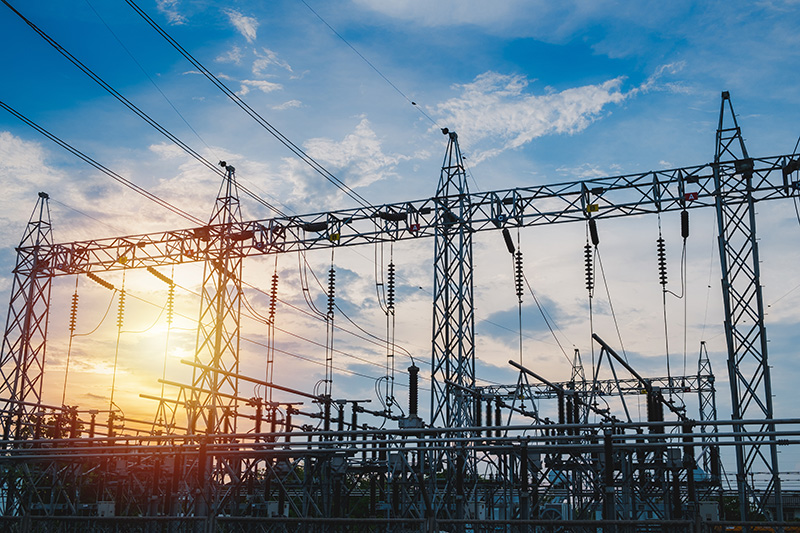Proximity to power substations can greatly impact land values, land use, and development potential. Whether you're a landowner, investor, or industry professional, knowing where substations are located can be a strategic advantage.
With Acres.com, you can use the Substation map layer to quickly evaluate power availability and site potential for informed decision making.
What is a Power Substation?
A power substation is a critical component of the electricity grid. It regulates, transforms, and distributes electricity, ensuring the proper voltage is delivered across various regions.
Substations bridge high-voltage transmission lines and lower-voltage distribution networks, maintaining grid stability and power reliability.
Map of U.S. Power Substations
Acres’ interactive Substations Map, available in our Layer Library, pinpoints substation locations nationwide. This powerful tool provides essential data, including:
- Substation type (e.g., transmission, distribution, underground)
- Status
- Capacity
- Ownership details
Connect with our sales team today to explore hundreds of data layers!
 Acres’ nationwide substation data is derived from the Homeland Infrastructure Foundation Level Database (HIFLD).
Acres’ nationwide substation data is derived from the Homeland Infrastructure Foundation Level Database (HIFLD).
How Substations Impact Landowners and Investments
Potential Benefits
- Industrial and Commercial Growth: Areas near substations often attract development, which can boost demand and land value.
- Reliable Power Supply: Proximity to substations supports business operations by ensuring consistent energy access.
- Landowner Compensation: Landowners who lease or sell property for a power substation can potentially receive financial compensation.
- Renewable Energy Opportunities: Being near a power substation can reduce costs and complexity for energy projects (e.g. solar or wind) with the added potential to increase property value.
Potential Drawbacks
- Residential Concerns: Visual impact, perceived safety issues, and noise may affect homebuyer interest and reduce land value.
- Zoning Restrictions: Zoning and land use regulations near substations may limit development options.
- Access Easements: Utility companies often require access to substations, potentially affecting land use.
How Substations Influence Land Use By Sector
Residential Neighborhoods:
- Visual Impact: Substations can be prominent and unattractive, potentially lowering nearby property values.
- Noise Pollution: A steady 50–60 Hz hum from transformers and switchgear may require noise mitigation strategies for new development (e.g. insulation or sound barriers).
Commercial Development
- Planning and Design: Commercial developments often use landscape buffers, signage, or parking lot placement to reduce visibility of nearby substations.
- Infrastructure Advantage: Substations support energy needs for grocery stores and big-box retail hubs, making development more practical and cost-effective.
Data Centers
- Site Selection Criteria: Proximity to a power substation is often a key site selection criterion for data center development. Sites near existing substations can be fast-tracked for development because less off-site electrical infrastructure is needed.
- Operational Efficiency: Being near a substation can reduce latency and improve uptime, both critical performance metrics for data center operations.
Final Thoughts
Understanding power substation locations and capacity is key to making informed decisions when selecting sites for new development projects. Acres’ Layer Library makes it easy to quickly access and evaluate the critical infrastructure data you need for site selection and investment opportunities.
